Related Research Articles

Sir George Cayley, 6th Baronet was an English engineer, inventor, and aviator. He is one of the most important people in the history of aeronautics. Many consider him to be the first true scientific aerial investigator and the first person to understand the underlying principles and forces of flight and the first man to create the wire wheel.

Marquess of Bath is a title in the Peerage of Great Britain. It was created in 1789 for Thomas Thynne, 3rd Viscount Weymouth. The Marquess holds the subsidiary titles Baron Thynne, of Warminster in the County of Wiltshire, and Viscount Weymouth, both created in 1682 in the Peerage of England. He is also a baronet in the Baronetage of England.

Sir Philip Bowes Vere Broke, 1st Baronet was a distinguished officer in the British Royal Navy. During his lifetime, he was often referred to as "Broke of the Shannon", a reference to his notable command of HMS Shannon in the War of 1812. His most famous military achievement was defeating and capturing the American frigate, USS Chesapeake.

Rear Admiral Sir Edward Thomas Troubridge, 2nd Baronet, was an officer of the British Royal Navy who served in the French Revolutionary, Napoleonic and War of 1812. He later served for fifteen years as the member of parliament for Sandwich, Kent.
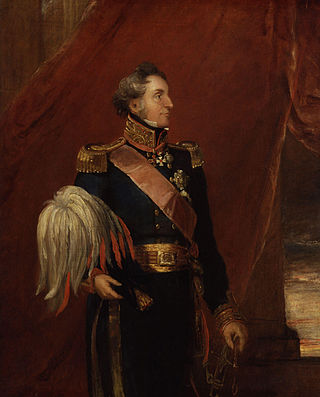
Lieutenant General Richard Hussey Vivian, 1st Baron Vivian, known as Sir Hussey Vivian from 1815 to 1828 and Sir Hussey Vivian, Bt, from 1828 to 1841, was a British cavalry leader from the Vivian family.

Henry Frederick Thynne, 6th Marquess of Bath, styled Lord Henry Thynne until 1916 and Viscount Weymouth between 1916 and 1946, was a British aristocrat, landowner, and Conservative Party politician.

Thomas Henry Thynne, 5th Marquess of Bath, styled Viscount Weymouth until 1896, was a British landowner and Conservative politician. He held ministerial office as Under-Secretary of State for India in 1905 and Master of the Horse between 1922 and 1924. He was also involved in local politics and served as Chairman of Wiltshire County Council between 1906 and his death in 1946.
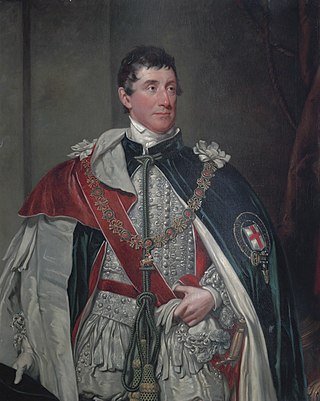
Thomas Thynne, 2nd Marquess of Bath KG, styled Viscount Weymouth from 1789 until 1796, was a British peer.

Charles Cecil Cope Jenkinson, 3rd Earl of Liverpool, styled The Honourable Charles Jenkinson between 1786 and 1828, was a British politician.

John Fane, 11th Earl of Westmorland, styled Lord Burghersh until 1841, was a British soldier, politician, diplomat, composer and musician.

There have been two baronetcies created for persons with the surname Buxton, one in the Baronetage of Great Britain and one in the Baronetage of the United Kingdom. One creation is extinct while the other is extant.

James Henry Robert Innes-Ker, 6th Duke of Roxburghe, KT was a Scottish peer.
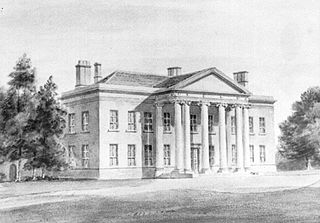
Spye Park is a former country estate in Bromham parish in Wiltshire, England. It lies north of Chittoe, about 1.5 miles (2.4 km) north-west of Bromham village and 2.5 miles (4 km) east of Lacock. The historic house which stood there, near the Roman road from London to Bath, had been twice destroyed by fire, most recently in 1974. The new owner, as of 2005, was planning to rebuild a Palladian house.

Sir Edward Cust, 1st Baronet, KCH was a British soldier, politician and courtier.

Sir Thomas Dyke Acland, 11th Baronet, FRS was a British educational reformer and a politician who sat in the House of Commons between 1837 and 1886 initially as a Tory and later, after an eighteen-year gap, as a Liberal.

There have been three baronetcies created for persons with the surname Style, one in the Baronetage of Ireland and two in the Baronetage of England. Two of the creations were in favour of the same person. As of 2014 one creation is extant.
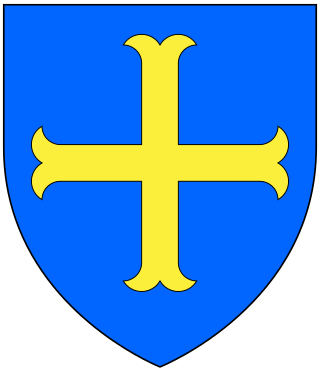
There have been three baronetcies created for descendants of the ancient Norman family of Molyneux who were granted extensive estates in Lancashire after the Norman Conquest.
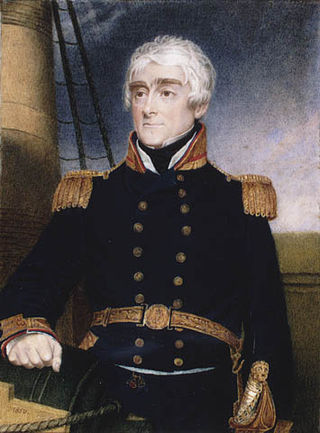
Admiral of the Fleet Sir Charles Ogle, 2nd Baronet was a Royal Navy officer. As a junior officer, he saw action leading storming parties at the capture of Martinique and at the capture of Guadeloupe during the French Revolutionary Wars. He also took part in the landings in Egypt in the later stages of the French Revolutionary Wars.
Sir Andrew Bayntun-Rolt, 2nd Baronet (1755–1816), of Spye Park, Bromham, Wiltshire, was a British politician who sat in the House of Commons from 1780 to 1786.
Robert Vyner, of Gautby, Lincolnshire, was an English politician who represented Lincolnshire from 1794 to 1802.
References
- 1 2 3 4 5 "Death of Sir T C Style". Western Daily Press. 24 July 1879.
- ↑ London Gazette, 16 April 1816
- ↑ M. Stenton, ed. (1976). Who's Who of British Members of Parliament: Volume I 1832-1885. Harvester Press. p. 369.
- ↑ "Will of the Late Sir Thomas Charles Style, Bart". Bath Chronicle and Weekly Gazette. 16 October 1879.